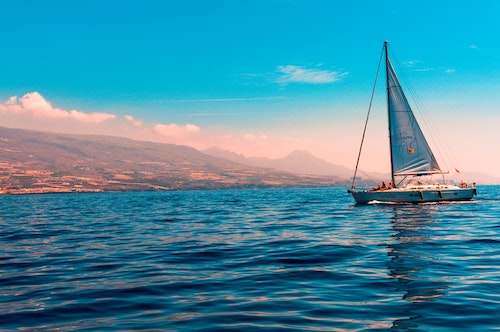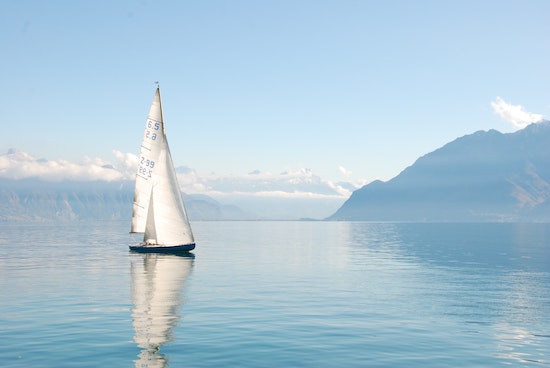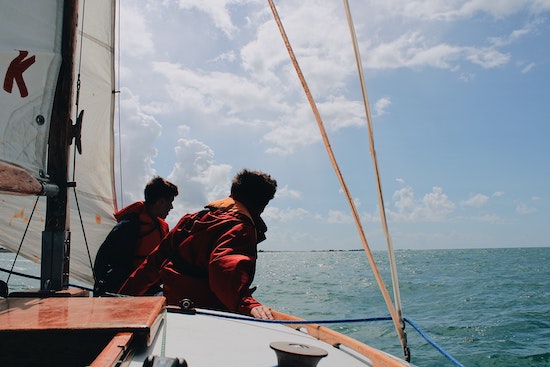Welcome, adventurous souls, to exploring the exciting journey from California to Hawaii by sailboat. As you embark on this oceanic expedition, it’s natural to have concerns about the challenges you may encounter along the way. Today, we will address some of the questions and curiosities that frequently arise when considering this voyage. Is it dangerous to sail from California to Hawaii? How hard is it to make this remarkable crossing? Is the Pacific Ocean rough between these two stunning destinations? Additionally, we’ll delve into which ocean presents the roughest sailing conditions and, conversely, which one may be deemed the safest. Whether you’re a seasoned sailor or a curious landlubber, join us as we set sail on this virtual exploration of the magnificent oceans.
Introduction

Sailing from California to Hawaii is an adventurous and thrilling journey that many sailors dream of undertaking. However, it is important to understand the challenges and potential risks associated with this voyage. The 2,225-nautical-mile passage across the Pacific Ocean can indeed present various dangers, but with proper preparation, experience, and caution, it is possible to navigate safely and enjoy the incredible journey.
One of the main hazards sailors face when sailing from California to Hawaii is the unpredictable weather conditions. The Pacific Ocean is known for its ever-changing weather patterns, which can range from calm and peaceful to powerful and treacherous. Storms, gales, and high winds are not uncommon during this voyage, so it is crucial to have a solid understanding of weather forecasting and to monitor the conditions constantly.
How Hard Is It to Sail From California to Hawaii?

Sailing from California to Hawaii is an exciting and challenging adventure that many sailors dream of. However, it is not an easy journey and requires careful planning, preparation, and a good understanding of the prevailing weather conditions along the route. The distance between California and Hawaii is approximately 2,225 nautical miles, which means it will take several weeks to complete the journey depending on the wind and current conditions.
The difficulty of sailing from California to Hawaii lies in various factors. Firstly, sailors need to navigate through the Pacific High, a large semi-permanent high-pressure system located in the North Pacific Ocean. This high-pressure system brings generally light winds, which can be challenging for sailors as it affects their speed and progress towards Hawaii.
Additionally, the Pacific Ocean is known for its ever-changing weather patterns, and sailors must be prepared to face strong winds, storms, and rough seas. The ocean swells, created by both local and distant weather systems, can sometimes be quite powerful and challenging to navigate through.
- Proper planning and route selection are crucial when sailing from California to Hawaii. Sailors often choose the Great Circle Route, which is the shortest distance between the two points, but it requires navigating through the Pacific High. Others opt for a more southerly route known as the Rhumb Line, which may take longer but offers more consistent winds along the way.
- One of the key challenges sailors face is the need to be self-sufficient for an extended period. The journey can take anywhere from two to three weeks, and it is essential to have enough food, water, and fuel on board to last the entire trip. Sailors must also be skilled in maintenance and repairs as there won’t be any stops or assistance available along the way.
Is the Pacific Ocean Rough Between California and Hawaii?

When it comes to sailing from California to Hawaii, many people wonder about the conditions they might face in the Pacific Ocean. One of the main questions that arises is whether the Pacific Ocean is rough between California and Hawaii. Well, the answer is not as straightforward as one might think.
The Pacific Ocean:
The Pacific Ocean is the largest and deepest ocean on Earth, covering more than 60 million square miles. It is known for its vastness, strong currents, and unpredictable weather patterns.
Challenges of Sailing:
Sailing from California to Hawaii can pose challenges due to the distance, which is approximately 2,400 nautical miles. The journey usually takes around two weeks or more, depending on the speed of the vessel and the conditions at sea.
Weather and Swells:
The Pacific Ocean between California and Hawaii is known for its changeable weather. Sailors need to be prepared for strong winds, rainstorms, and even the occasional tropical storm or hurricane. The high-pressure zone that often forms in the region is also a factor to consider. Additionally, swells and waves can be quite powerful, making the journey challenging for inexperienced sailors.
Navigating the Pacific:
Despite the potential challenges, experienced sailors often make successful voyages from California to Hawaii. Proper planning, navigation skills, and understanding of weather patterns are crucial when attempting such a journey. It is advisable to consult weather forecasts, seek advice from experienced sailors, and equip the vessel with safety equipment to ensure a safe passage.
Which Ocean Is the Roughest to Sail?

Sailing is an adventurous and thrilling activity that attracts people from all walks of life. The lure of the open sea, the connection with nature, and the freedom of exploring uncharted territories make sailing an exhilarating experience. However, not all seas are created equal when it comes to sailing. Some oceans pose greater challenges and dangers than others. We will explore the question of which ocean is the roughest to sail and what factors contribute to its reputation.
The North Atlantic Ocean:
- The North Atlantic Ocean is notorious for its unpredictable and severe weather conditions. The collision of warm and cold air masses creates powerful storms, heavy fog, and high winds, making it a challenging environment for sailors.
- The Gulf Stream, a strong ocean current that flows through the North Atlantic, often causes rough and choppy seas. The combination of strong currents and adverse weather conditions creates a formidable combination.
The Southern Ocean:
- The Southern Ocean, surrounding Antarctica, is one of the most treacherous bodies of water on Earth. It is characterized by strong westerly winds, frigid temperatures, and massive icebergs, making it extremely challenging for sailors.
- The unpredictable and violent weather systems, known as the Roaring Forties, Furious Fifties, and Screaming Sixties, bring powerful storms and massive swells, creating a perilous environment for sailing.
The Indian Ocean:
| Challenges | Danger Level |
|---|---|
| Variable wind patterns | Moderate |
| Tropical cyclones | High |
| Piracy | High |
What Is the Safest Ocean to Sail?

Sailing on the open ocean can be a thrilling and adventurous experience. But whether you are a seasoned sailor or a beginner, safety is always a top priority. One of the most common questions that arise when planning a sailing trip is, “What is the safest ocean to sail?” While every ocean presents its own challenges and risks, some are considered relatively safer than others. Let’s take a closer look at the factors that make an ocean safer for sailing.
When determining the safety of an ocean for sailing, several factors come into play. The first factor is the weather patterns and prevailing winds. Certain oceans, such as the Caribbean Sea or the Mediterranean Sea, are known for their consistent and favorable weather conditions. These regions generally experience mild winds and predictable weather patterns, making them relatively safer for sailing.
The second factor to consider is the geography of the ocean. Oceans with a large number of islands or coastal areas, like the Mediterranean or the Caribbean, provide sailors with more options for seeking shelter during inclement weather. These islands act as natural barriers against rough seas and can offer safe anchorages and ports where sailors can wait out storms.
- Weather patterns and prevailing winds
- Geography of the ocean
- Distance from land
- Availability of rescue services
Another crucial aspect is the distance from land. Oceans like the Atlantic and Pacific are vast expanses of water that offer fewer opportunities for seeking immediate help or finding refuge in case of an emergency. In contrast, sailing in smaller bodies of water, like the Baltic Sea or the Red Sea, allows for more frequent access to land and rescue services, enhancing safety levels.

Lastly, the availability and reliability of rescue services play a critical role in determining the safety of an ocean for sailing. Oceans with well-established search and rescue systems, like the Atlantic and Mediterranean, offer a greater sense of security for sailors, knowing that help is readily available in case of any unforeseen events or emergencies.
| Factors to Consider | Safest Oceans for Sailing |
|---|---|
| Weather patterns and prevailing winds | Caribbean Sea, Mediterranean Sea |
| Geography of the ocean | Caribbean Sea, Mediterranean Sea |
| Distance from land | Baltic Sea, Red Sea |
| Availability of rescue services | Atlantic Ocean, Mediterranean Sea |
Ultimately, it is important to remember that sailing always carries a certain degree of risk. While some oceans may be considered safer than others, unforeseen weather conditions, human error, and equipment failures can still pose challenges. Therefore, it is crucial for sailors to be well-prepared, equipped with the necessary knowledge, and have a comprehensive understanding of the potential risks and safety measures associated with sailing in any ocean.




